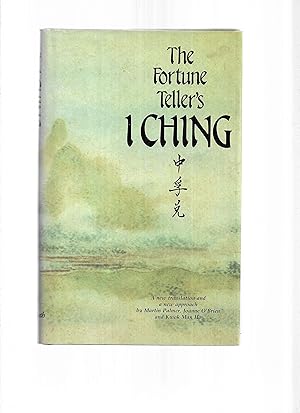heertfordshire uk 1993 wordsworth editions (1 results)
FeedbackSearch filters
Product Type
- All Product Types
- Books (1)
- Magazines & Periodicals (No further results match this refinement)
- Comics (No further results match this refinement)
- Sheet Music (No further results match this refinement)
- Art, Prints & Posters (No further results match this refinement)
- Photographs (No further results match this refinement)
- Maps (No further results match this refinement)
- Manuscripts & Paper Collectibles (No further results match this refinement)
Condition Learn more
- New (No further results match this refinement)
- As New, Fine or Near Fine (No further results match this refinement)
- Very Good or Good (No further results match this refinement)
- Fair or Poor (No further results match this refinement)
- As Described (1)
Binding
- All Bindings
- Hardcover (1)
- Softcover (No further results match this refinement)
Collectible Attributes
- First Edition (No further results match this refinement)
- Signed (No further results match this refinement)
- Dust Jacket (1)
- Seller-Supplied Images (1)
- Not Print on Demand (1)
Language (1)
Price
- Any Price
- Under £ 20
- £ 20 to £ 40 (No further results match this refinement)
- Over £ 40 (No further results match this refinement)
Free Shipping
- Free Shipping to United Kingdom (No further results match this refinement)
Seller Location
Seller Rating
-
THE FORTUNE TELLER'S I CHING: A New Translation And A New Approach
Published by Heertfordshire UK. 1993. Wordsworth Editions, 1993
ISBN 10: 1853269964 ISBN 13: 9781853269967
Language: English
Seller: Chris Fessler, Bookseller, Howell, MI, U.S.A.
£ 15.54
Convert currency£ 36.21 shipping from U.S.A. to United KingdomQuantity: 1 available
Add to basketfull color glossy illustrated (cover of book and cover of dustwrapper are identical in appearance)hardcover 8vo. (octavo). dustwrapper in protective plastic book jacket cover. very fine cond. mint cond. looks new. like new. as new. binding square & tight. covers clean. edges clean. contents free of markings. dustwrapper in fine cond. not worn or torn or price clipped (no price listed). nice clean copy. no library markings, store stamps, stickers, bookplates, no names, inking, underlining, remainder markings etc~. first printing (NAP) of this edition (originally published in 1986). decorative title pg. (calligraphy). 232p. b&w diagrams & calligraphy. facsimile of chinese i ching manuscript. 2 appendices. notes. philosophy. ancient chinese literature. taoism. confucianism. divination. psychology. ~ THIS is the first translation of the I CHING to be based on the editions of the book as used by Chinese fortune tellers and ordinary people. It is moreover, the first edition to introduce the method of casting the coins used by the Chinese ~ the eight coin 'Pa Ch'ien' method ~ which is both more direct and gives clearer readings than the methods currently used in the West. This I CHING gives clear and direct advice, as if you were actually sitting with a Chinese fortune teller. The I CHING ( or Book of Changes) goes back over 3,000 years to pre~Confucian times. It has been used as an oracle, as a stimulus to creativity and intuition, as a focus for meditation ever since. It first came to the West some hundred years ago, and subsequently all editions and translations have drawn upon the 18th Century Imperial Edition, and have also imposed upon the book a heavy burden of philosophical interpretations which makes most editions hard to follow and use. But the I CHING is dynamic, and the astrologers, fortune tellers and ordinary Chinese people have for centuries used an I CHING which is more open, free and accessible. And most have long since abandoned the familiar three~coin system ( although the three~coin instructions are included here, as well as the old yarrow stalks method). The edition and method they use today ~ for both divination and meditation ~ is simpler, more direct and unambiguous. Of course the 'Pa Ch'ien' method still relies on what appears to be chance: 'It is the great achievement of the I CHING', said C.G. Jung, 'that a reaction that makes sense arises out of a technique seemingly excluding sense . ' To find out what kind of sense the I CHING makes, you must use it. And this is the best edition available for exploring its possibilities. Cover painting ~ A landscape by Hu Yu K'un, China, 17th century.


